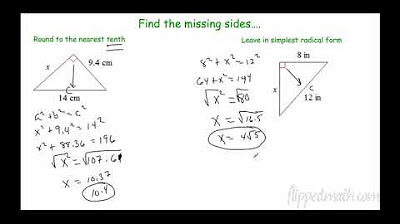OHMMETER SCALE READING VIDEO PRESENTATION
Summary
TLDRIn today's lesson, Mr. Ronald A. Gonzalez teaches about ammeter scale reading. He explains the non-linear scale, showing how to read resistance values from right to left, with different increments per range. He covers scales from 0 to 200 in 0.2 increments, 2 to 10 in 0.5 increments, 10 to 20 in 1 increment, 20 to 50 in 2 increments, and so on, up to 200 to 500 in 100 increments. He also discusses using the selector knob to choose the correct multiplier for high resistance values and provides a formula to calculate actual resistance. Examples are given to demonstrate how to apply the range multiplier to get the final resistance value.
Takeaways
- 📝 The video is a tutorial on how to read an ammeter scale, which is used to measure electrical current.
- 📝 The ammeter scale is non-linear, with different increments of values per line depending on the range.
- 📝 The scale ranges from 0 to 200 with varying increments: 0.2 from 0 to 2, 0.5 from 2 to 10, 1 from 10 to 20, 2 from 20 to 50, 5 from 50 to 100, 20 from 100 to 200, and 100 from 200 to 500.
- 📝 To read the resistance value, one must start from the right and move to the left, as the scale is descending.
- 📝 For high resistance values, a selector knob is used to choose the appropriate multiplier or resistance range.
- 📝 The formula to calculate the resistance value is: Resistance Value = Actual Reading × Resistance Range or Multiplier.
- 📝 The video provides an example of how to read the ammeter scale at different ranges, such as 50 to 100 and 10 to 20.
- 📝 The actual reading is determined by counting the increments from the starting point of the range to the pointer's position.
- 📝 The resistance range multipliers available are: ×1, ×10, ×100, ×1K, and ×10K.
- 📝 The video concludes with examples demonstrating how to apply the formula to get the resistance value for different ranges and actual readings.
Q & A
What is the topic of the lesson conducted by Ronald A. Gonzalez?
-The topic of the lesson is about ammeter scale reading.
Where is the ammeter scale located on the meter panel?
-The ammeter scale is located in the top most part of the meter panel.
How is the scale of an ammeter described in terms of its numerical order?
-The scale of an ammeter has a descending order of numbers from left to right.
What is the starting point for reading resistance values on an ammeter?
-Reading resistance values starts from zero on an ammeter.
Why are the gaps between numbers on an ammeter scale not equally divided?
-The gaps between numbers on an ammeter scale are not equally divided because it is a non-linear scale.
What is the value per line from zero to two on the ammeter scale?
-The value per line from zero to two on the ammeter scale is 0.2.
How do you calculate the resistance value when using an ammeter?
-The resistance value is calculated by multiplying the actual reading by the resistance range or multiplier.
What are the different multipliers or resistance ranges available on an ammeter?
-The different multipliers or resistance ranges available are: times one, times 10, times 100, times 1K, and times 10K.
What is the formula to get the resistance value as mentioned in the script?
-The formula to get the resistance value is: Resistance value = Actual reading multiplied by Resistance range or multiplier.
In the example provided, what is the actual reading when the pointer is between 50 and 100 on the scale?
-The actual reading when the pointer is between 50 and 100 on the scale is 65 ohms.
What is the result of the actual reading of 65 ohms when multiplied by the 10K multiplier?
-The result of the actual reading of 65 ohms when multiplied by the 10K multiplier is 650k ohms.
Outlines

此内容仅限付费用户访问。 请升级后访问。
立即升级Mindmap

此内容仅限付费用户访问。 请升级后访问。
立即升级Keywords

此内容仅限付费用户访问。 请升级后访问。
立即升级Highlights

此内容仅限付费用户访问。 请升级后访问。
立即升级Transcripts

此内容仅限付费用户访问。 请升级后访问。
立即升级浏览更多相关视频

Renting a New Apartment | Improve your English | Listen and speak English Practice Slow & Easy

Penggunaan Simple Present Tense dan Contohnya | Kampung Inggris LC

English Expressions: three-word phrasal verbs

Countryballs Learn Music

Mastering the Nominative Case in German: A Complete Guide! (Beginner / A1-A2) - 1080p/Full HD 🔥

Geometry – 7.1 Pythagorean Theorem and Its Converse
5.0 / 5 (0 votes)
